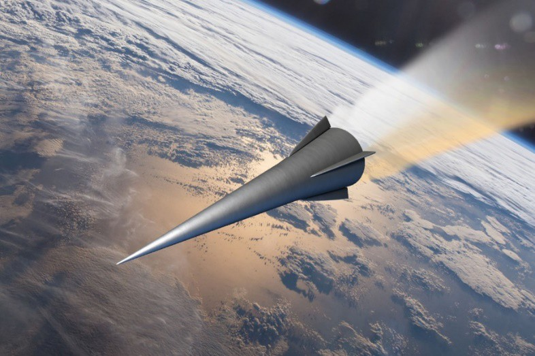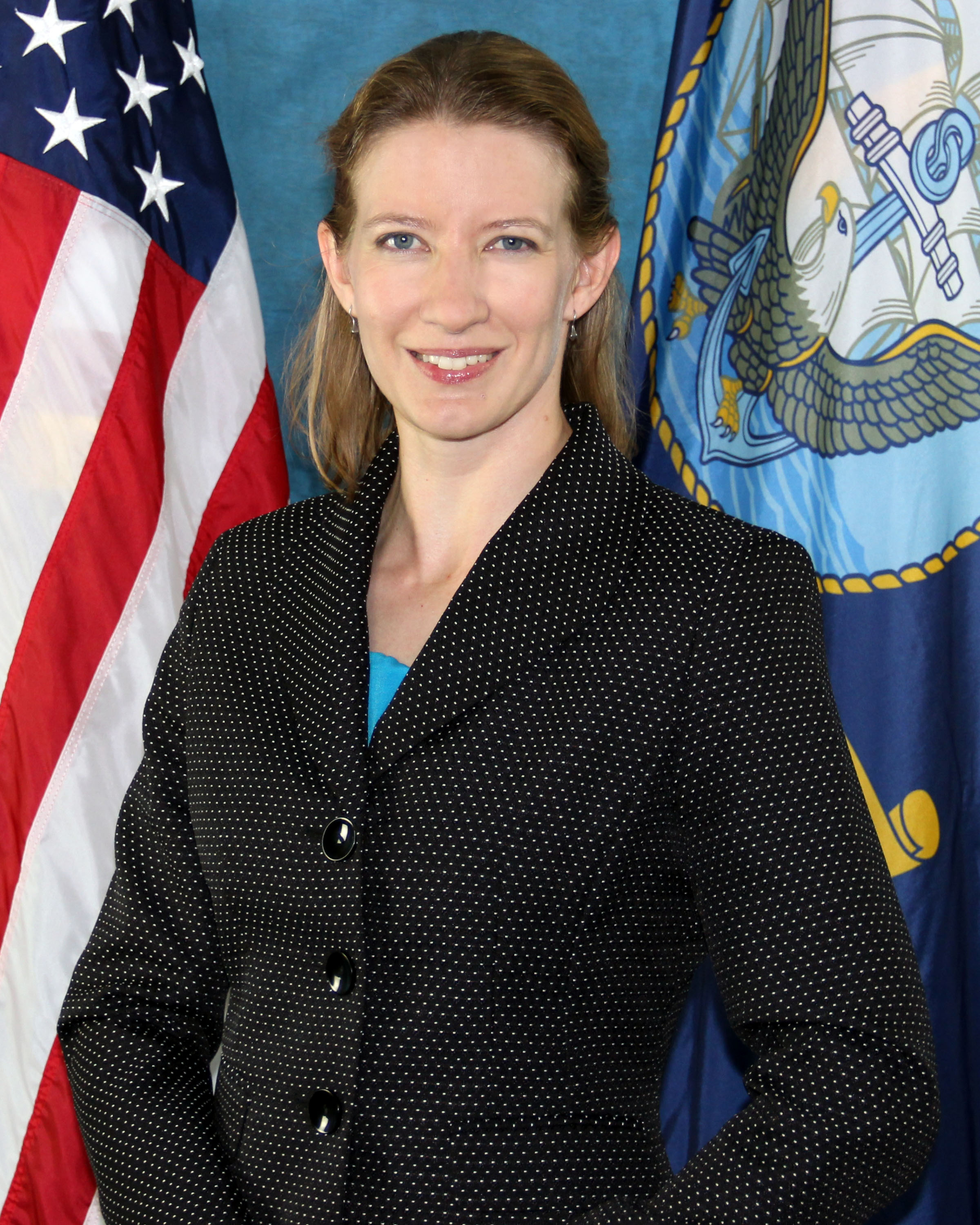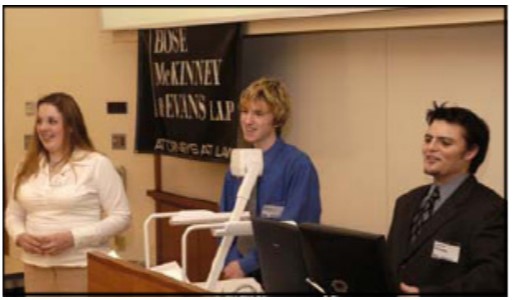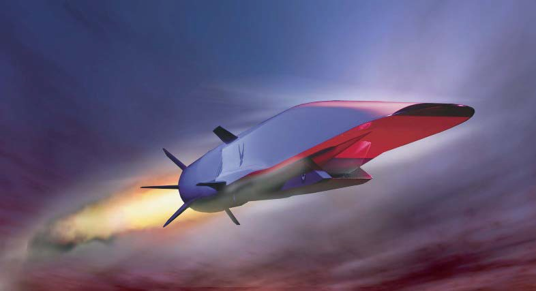Crane, Ind. – Dr. Sarah Armstrong was named Director of the Joint Hypersonics Transition Office Systems Engineering Field Activity (JHTO SE FA) at Naval Surface Warfare Center, Crane Division (NSWC Crane) in January 2021. Over the course of her career, Dr. Armstrong has also worked as failure analysis engineer, a radiation-hardened analog integrated circuit designer, task manager, customer advocate, and branch manager.
Dr. Armstrong said adversaries have aggressively pursued hypersonic technologies and capabilities, and the U.S. has developed an integrated strategy to accelerate the development and fielding of hypersonic systems, both offensive and defensive. The 2018 National Defense Strategy says hypersonics is one way to “ensure we will be able to fight and win the wars of the future.”
“The physics of flight change in a hypersonic environment,” said Dr. Armstrong. “There are technical challenges to be addressed throughout the systems. My job is to take the systems engineering view of the overall hypersonics strategy and break it down to pieces of approachable technologies for the research community to address. We then accelerate the transition of those technologies into program implementation.”
 Hypersonics is a category of weapons that can travel within the upper atmosphere (about 15 to 30 miles above Earth) for sustained periods of time at greater than five times the speed of sound. Commercial flights range from about 5.9 miles to 7.2 miles above the earth’s surface, according Adam Beckman, a lecturer for aviation studies at Ohio State University quoted in a 2018 Time article. The U.S. Air Force awards Astronaut Wings at 50 miles above the Earth’s surface.
Hypersonics is a category of weapons that can travel within the upper atmosphere (about 15 to 30 miles above Earth) for sustained periods of time at greater than five times the speed of sound. Commercial flights range from about 5.9 miles to 7.2 miles above the earth’s surface, according Adam Beckman, a lecturer for aviation studies at Ohio State University quoted in a 2018 Time article. The U.S. Air Force awards Astronaut Wings at 50 miles above the Earth’s surface.
According to the CNO NavPlan, “Characteristics of premium value in a fight for contested seas are distributed weapons of increasing range and speed … stealth, deception, and sustainability.”
In October 2020, the Office of the Undersecretary of Defense (OSD) for Research and Engineering (OUSD(R&E))’s Joint Hypersonics Transition Office (JHTO) established its Systems Engineering Field Activity at Naval Support Activity, Crane. The Field Activity works with the Pentagon-based JHTO to coordinate architectures, interfaces, schedules, and plans to transition a more modular, affordable, and upgradable hypersonics portfolio of capabilities and technologies.
“I look for similarities between program needs and ways to maximize investments,” said Dr. Armstrong. “I look at today’s research and state-of-the-art systems and determine how they can help carry out the long-term strategy for the hypersonics enterprise.”
She said communication has been integral to her current role.
“Getting program buy-in, research buy-in, and everyone in between on board with the idea that we’re going to get the most advanced technology fielded as quickly as possible requires communication and trust among all of these entities.”
Dr. Armstrong said one reason why OUSD(R&E)’s JHTO chose NSWC Crane for the JHTO SE FA is its reputation for making the connection between research and the warfighter and its ability to provide data to advance the technology readiness level.
“We have a history of looking at what’s in the research world and connecting that with the needs of our customers,” she said. “We also have a host of capabilities from a systems engineering view, modeling and simulation view, and testing view. That helps us take these ideas into a fieldable capability.”
In addition, Dr. Armstrong highlighted the Innovation Ecosystem. The ecosystem is home to academic partners in the University Consortium of Applied Hypersonics (UCAH) like Purdue University and the University of Notre Dame, whom also play a crucial role in hypersonics research and development.
Her Path at Crane
Before her current role, Dr. Armstrong established a project management branch focused on nuclear modernization and trusted microelectronics reaching across the Department of Defense (DOD). She is also active in the national radiation effects communities, serving in numerous capacities on behalf of both the Institute of Electrical and Electronics Engineers (IEEE) Radiation Effects Steering Group (RESG) and the Hardened Electronics and Radiation Technology (HEART) Society. Starting in April 2021, she will serve as Chair of the HEART Society.
Dr. Armstrong said her career path from Purdue co-op participant in 1997 to JHTO SE FA Director in 2021 has had a logical - but not obvious - flow, and she is grateful for the opportunities she sought out early in her career that led her to the JHTO SE FA.
 “When I started at Crane, I was given the opportunity to rotate with the Failure Analysis and Radiation Hardened Design branches,” said Dr. Armstrong. “They linked my education to the work right away. From day one I felt like I was making an impact. It really sold me on the mission and my ability to make a difference.”
“When I started at Crane, I was given the opportunity to rotate with the Failure Analysis and Radiation Hardened Design branches,” said Dr. Armstrong. “They linked my education to the work right away. From day one I felt like I was making an impact. It really sold me on the mission and my ability to make a difference.”
Dr. Armstrong graduated from Purdue in 2001 and worked for five years at Crane. She was then selected for the first cadre of the NSWC Crane PhD fellowship program. She completed her degree at Vanderbilt University in 2011 with a PhD in Radiation Effects in High Speed Communications Devices.
Upon return, Dr. Armstrong began working for the Strategic Missions area by coordinating Naval Innovative Science & Engineering (NISE) 219 Program support for Navy’s Strategic Systems Programs (SSP) at Crane. SSP is responsible for the development, production, and life cycle support of the U.S. Navy's Fleet Ballistic Missile (FBM) Strategic Weapons System (SWS) – the nation’s primary strategic deterrent. The NISE program provides funding for Basic & Applied Research, Technology Transition, Workforce Development, and Laboratory Revitalization within the Department of Defense (DoD) laboratories to grow internal technical capabilities of the workforce and build critical infrastructure.
“I took on the challenge of maximizing SSP’s benefit from the NISE 219 Program,” said Dr. Armstrong. “For example, if their investments for Crane efforts accounted for 1 million dollars of NISE funds, I made sure they got 2 million dollars in projects beneficial to them. I did that by really understanding what they need and making sure our scientists and engineers knew how their work and abilities applied to those needs – even if SSP wasn’t the original intended customer.”
From there, Dr. Armstrong started engaging with the Air Force’s (AF) Ground-Based Strategic Deterrent (GBSD), another leg of the nation’s nuclear triad. She worked to see how the Air Force could benefit from the Navy’s microelectronics experience with the D5 Life Extension (D5LE) Program, and how the Navy could benefit from the Air Force’s experiences in the future.
“That experience led to my becoming the Customer Advocate for Deterrence and Defense Systems,” said Dr. Armstrong. “I was working across the services, understanding investments, and comprehending what Crane could do for our customers.”
Dr. Armstrong said exploring the opportunities for collaboration among services as a customer advocate heavily influenced her.
“I remember walking into a collaborative meeting with leadership from Navy SSP and AF GBSD. Something clicked in my head about the magnitude of the potential of how these systems with so many common attributes could work together to accelerate the technology and target investments to make both systems better,” she said. “After seeing the potential outcomes from the collaboration in that room, I’ve always looked for that in jobs since.”
Leading by Example
Customer support has been important to Dr. Armstrong since her first real-world experience with the Purdue Engineering Projects in Community Service (EPICS) program in college.
“As undergrads, we are paired with a community service partner and given real projects with project management, customer interaction, and consequential deadlines,” she said. “That program made a huge impact on my life. Seeing how my skills could be used to help other people was a defining moment.”
After coming to Crane, Dr. Armstrong was approached by colleague Jill Heinzen about creating a pilot high school EPICS program for her alma mater, Bedford North Lawrence High School. The first project was helping a child with cerebral palsy remember to swallow since she did not have the reflex.
 “We ended up patenting the project and competing against the collegiate level EPICS teams in a product competition,” she said. “The students came in third place in an undergrad researchers’ competition.”
“We ended up patenting the project and competing against the collegiate level EPICS teams in a product competition,” she said. “The students came in third place in an undergrad researchers’ competition.”
The team won the award for the best technical presentation. They received prize money, a connection to a law firm specializing in patent law, and two hours with a patent lawyer. The device was submitted for a provisional patent. (Pictured right: 2007 Bedford North Lawrence EPICS participants.)
From there, Purdue took the data and model developed at Crane to create more than 50 EPICS programs. The high school program is tied to the international collegiate program.
Dr. Armstrong said she believes early involvement like EPICS is key to attracting and retaining women in STEM and defense.
“From the high school EPICS program, we had many of the students go into engineering, and we had almost 50 percent female participation in the program,” she said. “I believe in getting women involved STEM fields and keeping them here. Having broad perspectives is key to having a solid defense program.”
Dr. Armstrong said being proactive and asking to be involved in interesting projects helped her control her career path, advice she encouraged others looking for a similar career path to follow.
“Keeping the aperture open and not limiting yourself to a traditional career path is important. Look for areas to contribute from day one, and explore and see what’s out there. That exploration will provide a bigger picture and help you go where you want to go.”
Developing the Hypersonics Enterprise
Dr. Armstrong said she is grateful to lead the JHTO SE FA because it will allow her to continue education outreach. Along with systems engineering, the JHTO SE FA has a workforce development effort intended to educate and excite students about hypersonics - from K-12 STEM through doctorate programs.
The goal of the workforce development effort is to maintain a consistent, clearable hypersonics workforce for many years to come. This goal applies to the entire post-high-school workforce: trade school, undergraduate, and graduate programs. She said she hopes linking an exciting, impactful application, such as hypersonics, to education will retain students in the same way that community service retains students in the EPICS program.

Dr. Armstrong said she wants to establish the Field Activity and larger JHTO as keys to making new technology impact hypersonics quickly.
“I want to put researchers and partners together to build that foundation for fielding technologies much earlier than anyone anticipated. If a researcher is getting hung up on a technical problem, we want to connect them right away with someone else working on the same problem, so the roadblock is cleared and we move on with testing and getting into the field.”
She said she plans for the JHTO SE FA to become a permanent expert in hypersonics technology.
“I want to solidify Crane’s place in the hypersonics technology transition area and the hypersonics field overall. I want to leverage our office to get the hypersonics enterprise working together to maximize the effectiveness of the overall system, both offense and defense. I want everyone working together to make sure we have the global coverage we need.”
Dr. Armstrong said she is motivated by her desire to keep her family safe.
“I think understanding how what I do can protect our country is motivating,” she said. “I want to understand the global posture well enough to be comfortable having my children there. I can make an impact on that with my job, which is amazing.”
About NSWC Crane
NSWC Crane is a naval laboratory and a field activity of Naval Sea Systems Command (NAVSEA) with mission areas in Expeditionary Warfare, Strategic Missions and Electronic Warfare. The warfare center is responsible for multi-domain, multi- spectral, full life cycle support of technologies and systems enhancing capability to today's Warfighter.